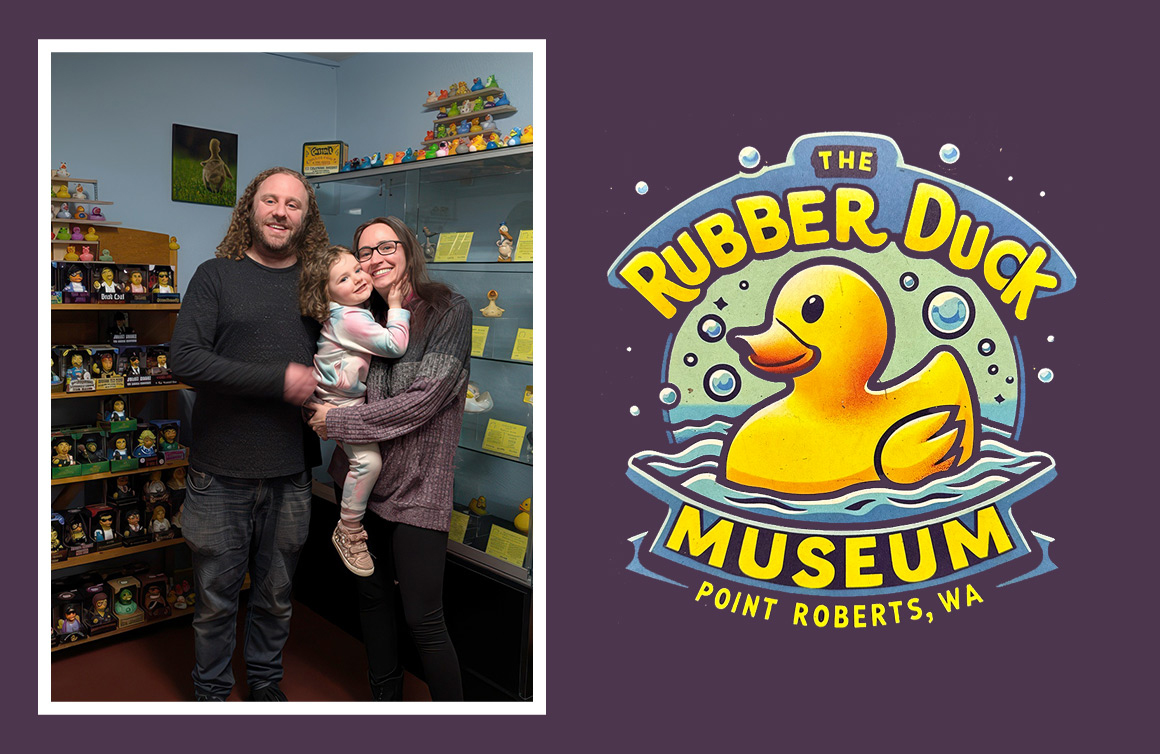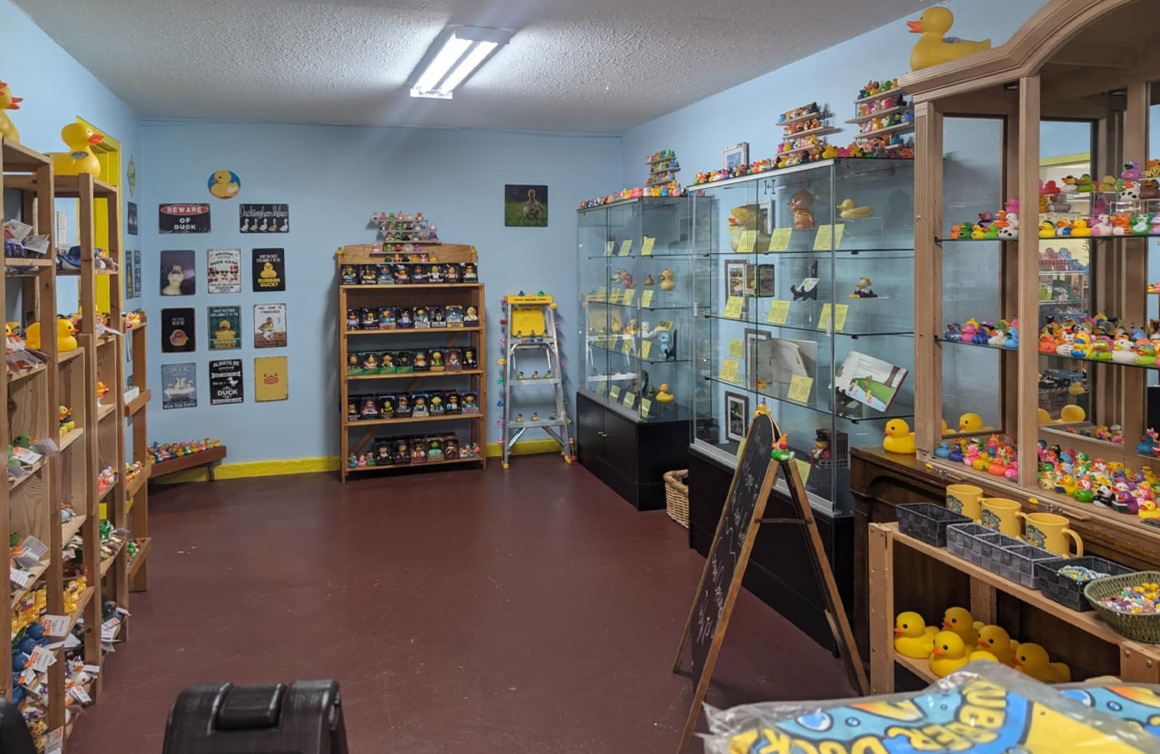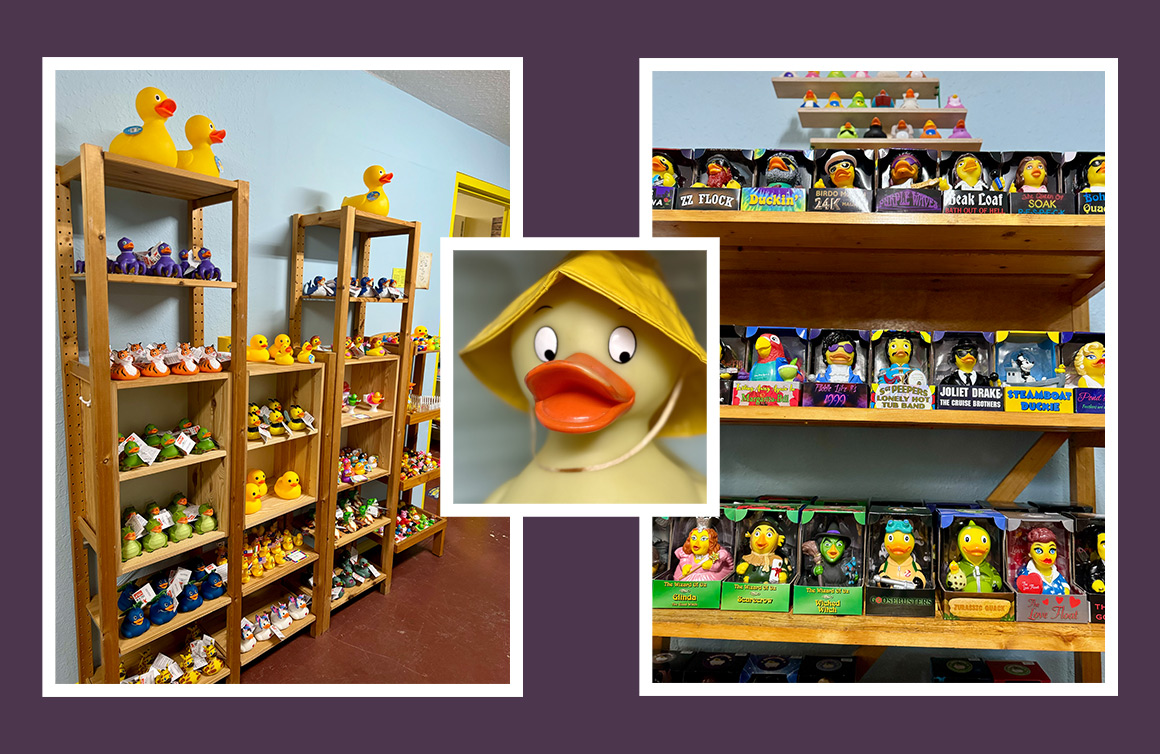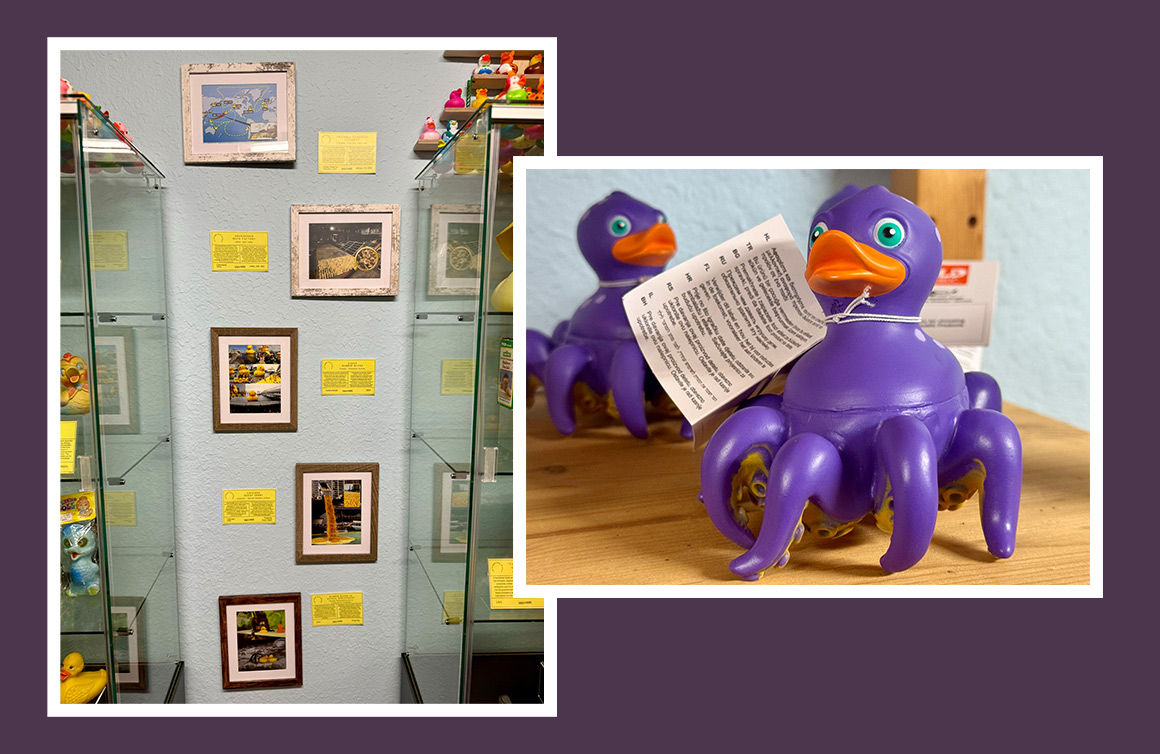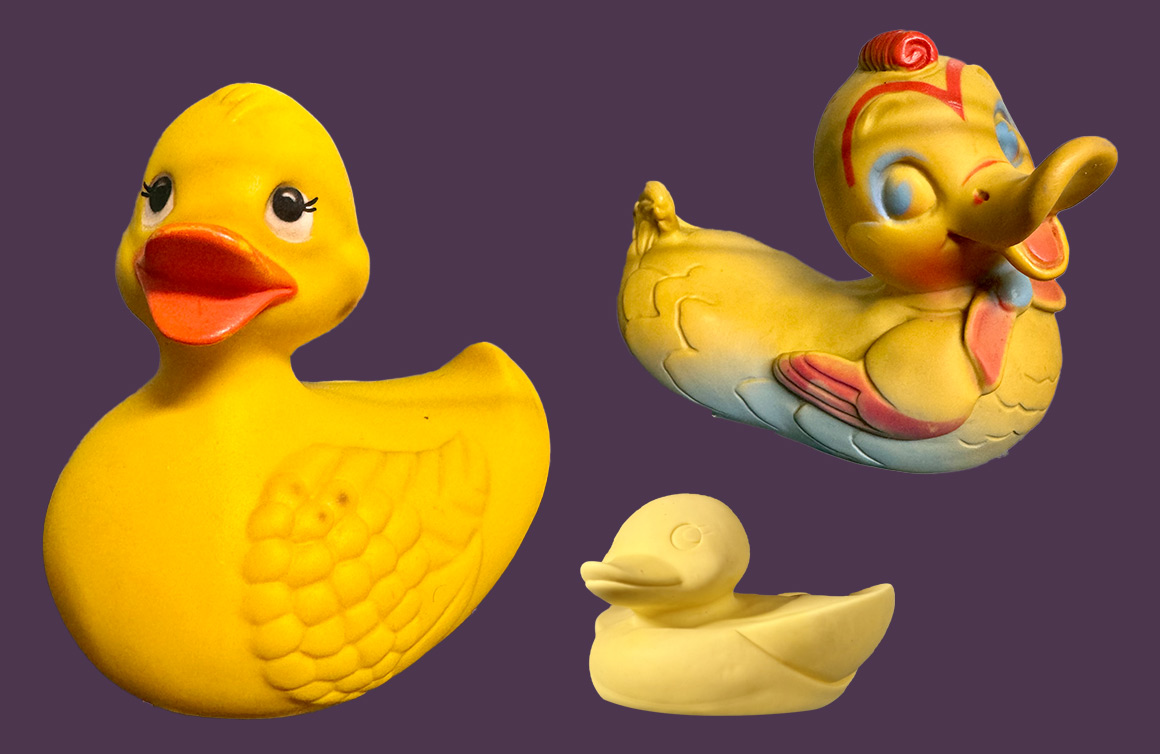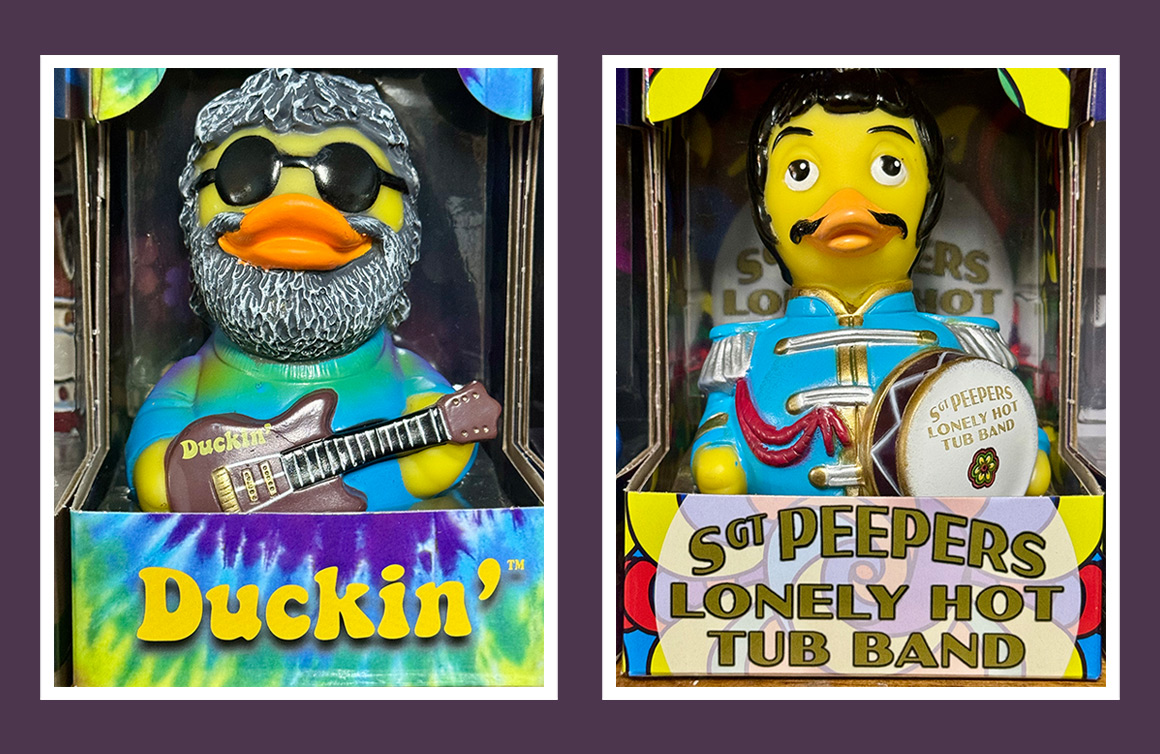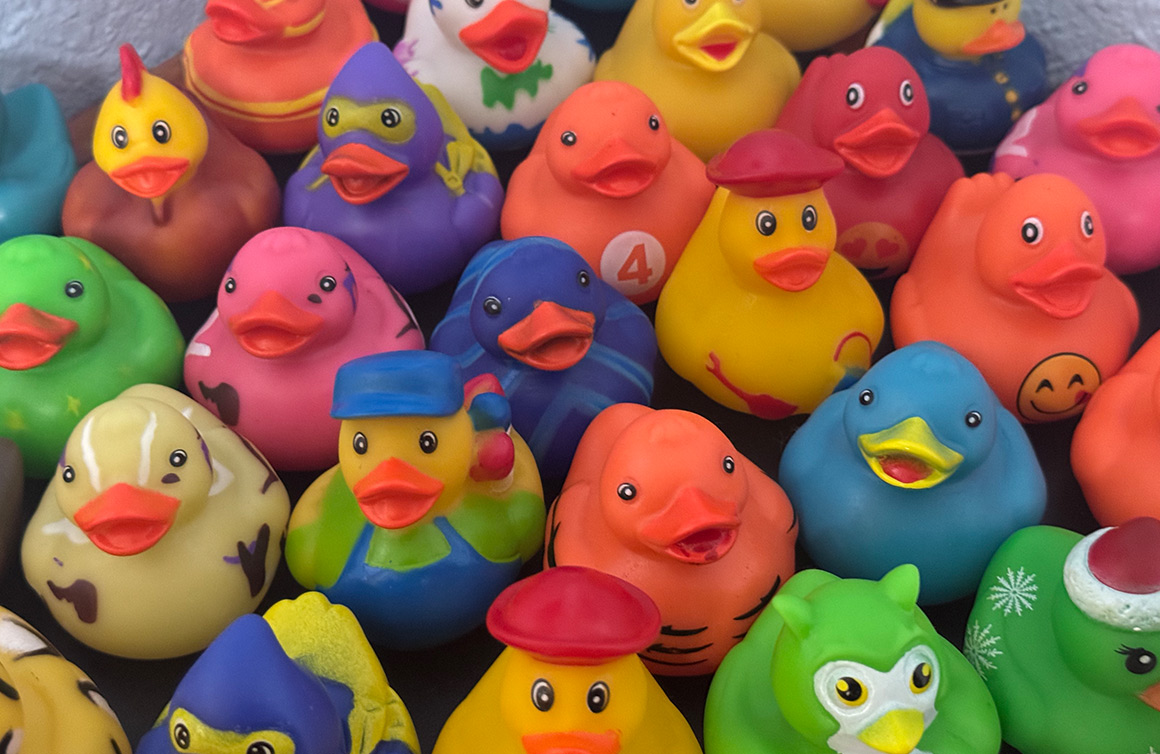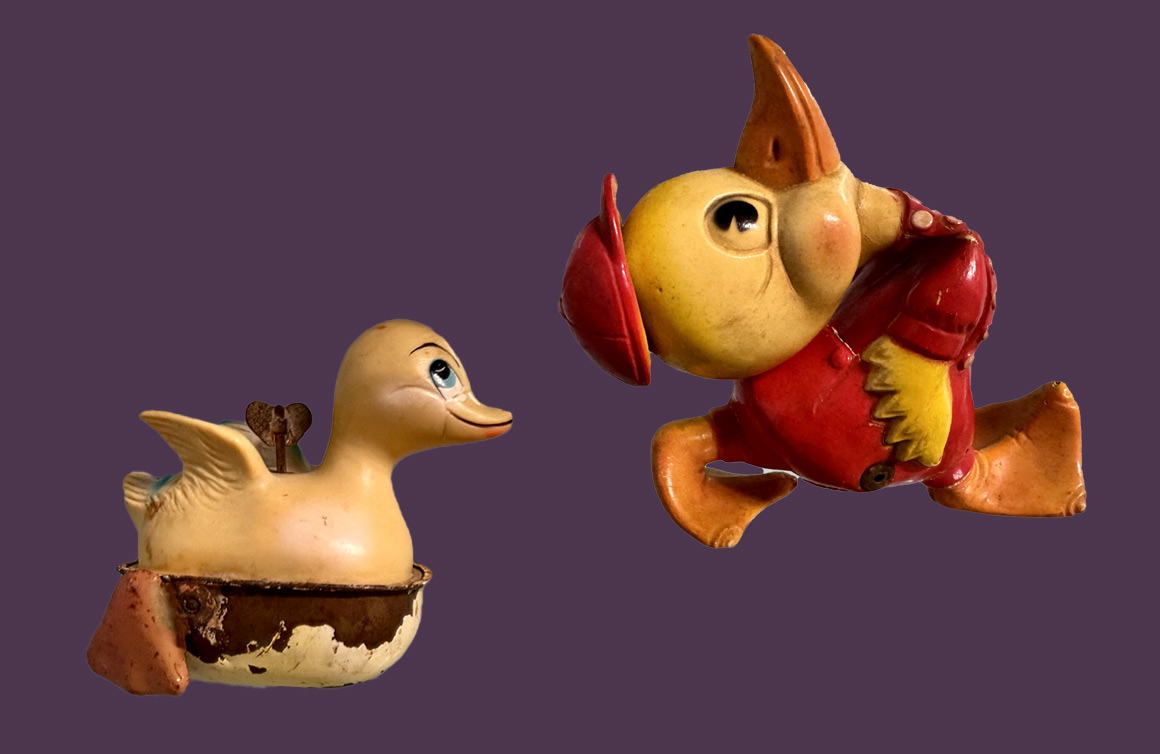Tell us about the Rubber Duck Museum.
My wife, Krystal, and I moved to Point Roberts four years ago—intentionally in the middle of the pandemic. We came out here because it was quiet, beautiful, and we just really needed to get away from the hustle and bustle of the city. Both of us were born and raised in major cities all across the U.S. and had only ever lived in urban areas. We needed a change. We discovered Point Roberts through news stories during COVID and decided to make the move.
A year after we moved here, we took over the country store and turned it into Kora’s Corner Country Store, now a souvenir and gift shop.
Two and a half years after opening the store, we opened the Rubber Duck Museum.

What inspired you to open a museum dedicated to rubber ducks?
We wanted to figure out a way to bring people to town. There is a back room to the store. We went through many iterations, and just nothing really stuck. One day, driving back from Seattle, Krystal suggested opening a Rubber Duck Museum. I told her that was the best idea I’d ever heard. That night, we went home and started doing research.
Our original concept was to have a collection of celebrity-signed and rare rubber ducks. It turns out that the history of rubber ducks is fascinating. We found artifacts through online toy auctions, vendors, and collectors, and slowly built the museum from there.
We now have 45 different artifacts ranging from 1911 to the present, with highlights including rubber duckies used on Sesame Street. We also have over 3,000 ducks for sale in the store.
The ducks are arranged chronologically to help tell the story. I come from a film background—I studied it in school and worked in Los Angeles for eight years. Storytelling is everything to me.
Krystal created detailed museum cards for each item, highlighting the manufacturer, historical context, and significance. Although the first rubber duck patent wasn’t filed until 1949, our collection goes back to 1911. Our collection explores how that 1949 patent sparked a global phenomenon and how rubber ducks evolved into the pop culture icons they are today.
We include records, books, and even a baseball signed by the mascot of the Akron RubberDucks minor league baseball team. Historical photos illustrate the 1949 patent, and we share the story of the 1992 Friendly Floaties spill, when thousands of rubber ducks ended up in the ocean.
Rubber ducks have always had a weird back-of-the-mind history with us. When we first took over the store, rubber ducks were the very first item we stocked, and they sold really well. One shelf turned into a whole display with over 100 ducks.
My wife is so creative and brilliant. She brought it all together. We wanted something that was fun, innocent, culturally relevant, and something that brings people together. There are rubber duck stores, but not a museum. No one had told the story of the rubber duck, until now.

What are some of the most interesting or unusual rubber ducks you’ve acquired?
Every rubber duck in the museum has a great story behind it.
One of my personal favourites is from the 1930s, when Disney partnered with Seiberling to make rubber Donald Duck toys. They were made from Goodyear tire rubber. We were luck enough to find one, and shortly after, we came across one of the original moulds. The person selling it had no idea what they had, but we recognized it immediately and were able to acquire it.
The mould is really neat. We later discovered there were four different variations of this particular Donald Duck toy, and the mould matched the one in our collection. Disney, being as proprietary as they are, the mould is completely sealed shut. They melted it together and filled in the hole at the bottom.
One of the weirdest rubber ducks we have is one that we call the “Mandela Duck.” When we first go it, we couldn’t find any information on it. It had big eyes, was blue, and clearly from the 1950s or ’60s. It was just very odd-looking. We had to have it. But, there was no historical record of it, and we couldn’t find any other examples online. Krystal used her amazing sleuthing skills to find the manufacturer’s name, so we were eventually able to find a little more information about the company that made it. But it took a long time to get to that point. Who would ever guess that rubber ducks have such a rich and intricate history?
There is another odd one, but it never made it to us, unfortunately. We won an auction for a black rubber duck from Japan, likely from the 1970s. Japanese rubber ducks were taken to a whole new level. They added things like hair, so it was kind of like a stuffed animal with a rubber duck toy underneath it with a rubber face. We ended up winning an auction for a black rubber duck—he looked so metal. It got lost in shipping and never arrived.

Are there any specific types of rubber ducks you are still hoping to add to the collection?
We have what we refer to as our white whale.
As I mentioned earlier, in 1992, a shipment of rubber ducks was lost at sea during a storm. A toy company that was transporting them across the ocean when several containers fell overboard during a storm. Thousands of ducks spilled into the water. Scientists used the spill to study ocean currents and other environmental factors. To this day, ducks are still washing up on shores around the world.
We really want to get our hands on one of those ducks. Somebody somewhere has to have one, and we’d love to bring it to the museum. We had one customer who said they remembered this happening and picking a duck up off the beach. They thought they might have it in storage, but they weren’t able to find it.
That’s the one we’re still chasing.

Rubber ducks were inducted into the National Toy Hall of Fame at The Strong in 2013. What is it about these objects that keeps them ubiquitous in popular culture?
One of the reasons we ran with the idea for the museum is simple: rubber ducks are universally loved. They represent innocence and imagination. We always say there’s a duck out there for everyone, and we truly believe that.
During the pandemic, there was a resurgence of rubber ducks as both toys and collectibles. People were craving a return to simpler times. You can’t look at a rubber duck and feel stressed out. For most people, they are a sign of calmness, innocence, and simplicity.
I work in tech full-time. We do a thing called Ask the Duck. It’s a very popular model in the tech world where when you get stuck on a problem, you literally talk out the problem with a rubber duck before asking someone else. Everybody who works in tech should have a rubber duck on their desk! I have three normal rubber ducks on my desk and two special ones: a Michael Myers and a Chucky from a company called TUBBZ. They were gifts from my younger brother. I love horror movies, and TUBBZ makes some of the most creative and fun ducks out there right now.
It’s always just so fun. It’s just fun talking about this. We’ve experienced some unforeseen things because of this rubber duck Museum.
We opened the museum on July 4 last year, which brought more people into Point Roberts. We even had two visitors fly in from Australia. They made it sound like they chose this area because of the museum. That’s awesome!
We’ve unintentionally become experts in rubber duck history. A grade school student from Wyoming interviewed us for a research project—alongside the lady who holds the Guinness World Record for the largest rubber duck collection. A design student from California also reached out to us because they wanted to build a brochure for a class project. Somewhere along the way, we realized that maybe we are the experts. Who else really holds this knowledge?
And there’s so much more to explore. We’ve got ducks from the old USSR and Ukraine, where leftover rubber from bullets and weapons was repurposed. We have a Czechoslovakian duck, vintage soap dish ducks, art pieces from the 1950s, and Edward Mobley ducks.
The history goes surprisingly deep—and it just keeps going.

Learn more about the Rubber Duck Museum in Point Roberts, Washington.


